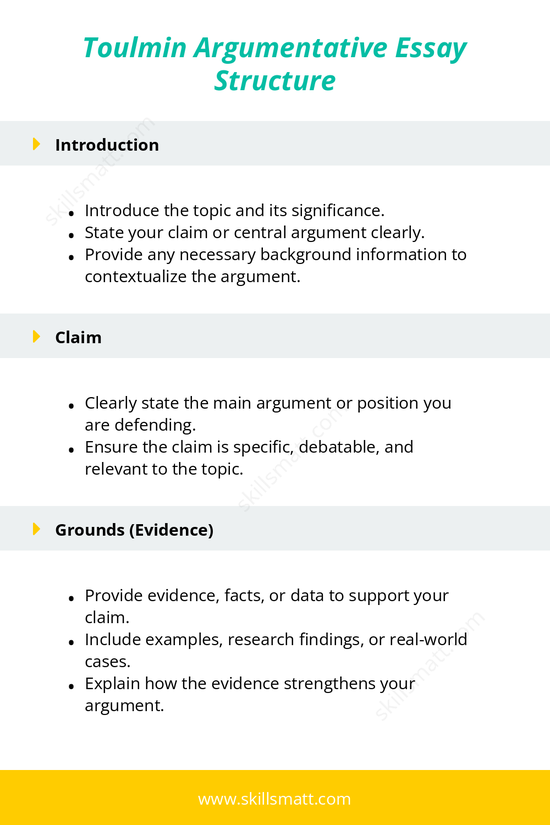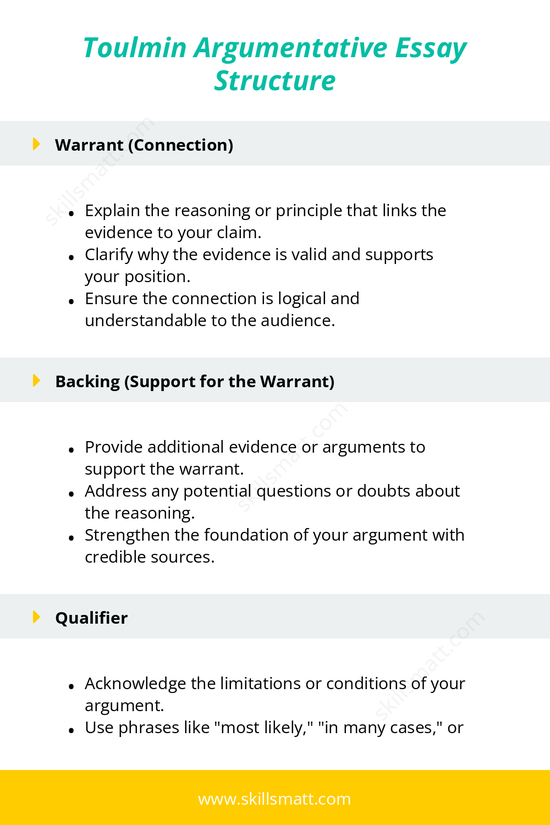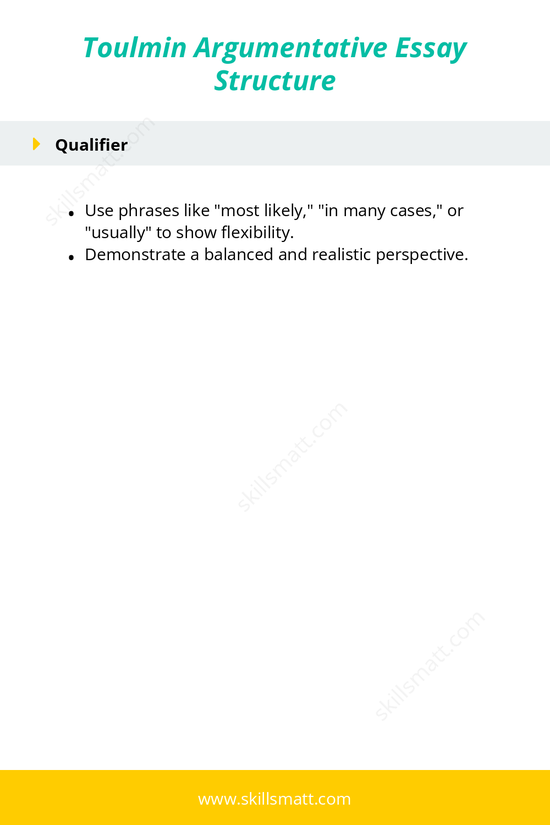Toulmin Argumentative Essay Structure
- Introduction: Introduce the topic and its significance. State your claim or central argument clearly. Provide any necessary background information to contextualize the argument.
- Claim: Clearly state the main argument or position you are defending. Ensure the claim is specific, debatable, and relevant to the topic.
- Grounds (Evidence): Provide evidence, facts, or data to support your claim. Include examples, research findings, or real-world cases. Explain how the evidence strengthens your argument.
- Warrant (Connection): Explain the reasoning or principle that links the evidence to your claim. Clarify why the evidence is valid and supports your position. Ensure the connection is logical and understandable to the audience.
- Backing (Support for the Warrant): Provide additional evidence or arguments to support the warrant. Address any potential questions or doubts about the reasoning. Strengthen the foundation of your argument with credible sources.
- Qualifier: Acknowledge the limitations or conditions of your argument. Use phrases like "most likely," "in many cases," or "usually" to show flexibility. Demonstrate a balanced and realistic perspective.
- Rebuttal: Address counterarguments or opposing views. Provide logical and evidence-based responses to refute these points. Show why your argument remains strong despite opposition.
- Conclusion: Restate the claim and summarize the main points of the argument. Emphasize the importance of your position. End with a strong final statement or a call to action.



